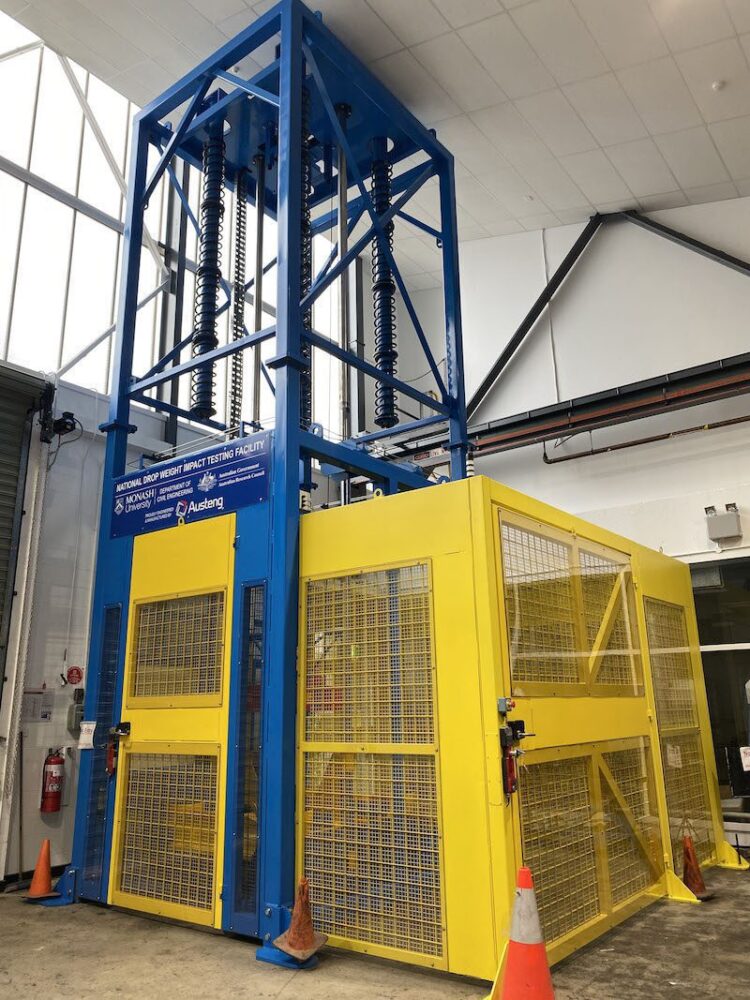A state-of-the-art impact testing facility designed to boost the structural safety of present and future high-risk infrastructure and save lives across Australia will be launched at Monash University.
In a move that will place Australia at the forefront of impact engineering research, the National Drop Weight Impact Testing Facility (NDWITF) will have world-leading technology that can observe the behaviour of elements under severe impact loading of up to two tonnes.
Sandvik staff embrace Industry 4.0 training
Connectivity solutions to go beyond the everyday
This facility has the capacity to assess the structural safety of high-risk infrastructure across Australia, including railway networks, tunnels and bridges, buildings and construction materials, as well as road safety barriers and protective equipment.
The NDWITF will also support research in the broader research community on construction, mining, geo-mechanics, energy and the environment. Fields of application and interest include construction materials under high strain loading, structural dynamics and engineering, mining excavation and rock fragmentation.
Enabled by an Australian Research Council (ARC) LIEF grant, the NDWITF is a Monash University-led collaboration involving six other universities, including the University of New South Wales, Swinburne University of Technology, Queensland University of Technology, University of Wollongong, University of Technology, Sydney and The University of Melbourne.
The facility, located at Monash University’s Department of Civil Engineering, is accessible to all researchers, students and industry.
Associate Professor Amin Heidarpour, Head of Structural Engineering at Monash University, has led this project. He was supported by some of Australia’s esteemed experts in this space, including Professor Xiao-Ling Zhao and Professor Mark Bradford (UNSW), Professor Guoxing Lu (Swinburne), Professor David Thambiratnam and Dr Sabrina Fawzia (QUT), Professor Alex Remennikov (Wollongong), Professor Brian Uy (Sydney), Professor Chengqing Wu (UTS), Professor Tuan Ngo (Melbourne) and Professor Pathegama Ranjith (Monash).
“Understanding the behaviour of construction and geo-materials under dynamic loading is essential in dealing with various engineering problems, such as protective structures design and impact cratering, excavation and mining, blasting and fragmentation, and risk management,” Associate Professor Heidarpour said.
“A state-of-the-art impact engineering facility provides national research focus on the behaviour of construction materials and systems under impact loading with unique observation techniques. The facility will advance understanding of the fundamental behaviour of critical infrastructure exposed to impact loading and will foster innovations in design and construction.
“This will ensure Australia is at the forefront of impact engineering research in the international arena, promoting local innovation and industrial competitiveness contributing to the safeguarding of Australia, saving lives and reducing losses.”
The performance of structures subjected to impact loading has received worldwide attention. The catastrophic failure of construction materials caused by extreme impact conditions, such as natural disasters and man-made hazards, has justified the need to carry out comprehensive research in order to develop future infrastructure with new, innovative, cost-effective and environmentally friendly materials.
The NDWITF have been constructed with a 2000kg impact mass that has the capacity to create impact energy of up to 200,000 J and impact velocity of up to 18m/s. Impact loading can be applied to specimens with a width of up to 1m and length of up to 2m. All displacements recorded within each test is captured by an optical 3D photogrammetry system.
“Thanks to the ARC LIEF grant, the NDWITF will provide economic, environmental and social benefits to Australia as it will undertake research in robust, resilient, cost-effective and environmentally friendly impact engineering applications. This will be of great benefit to the Australian construction and manufacturing industries and will promote Australia as the leader in new construction technology,” Associate Professor Heidarpour said.
A key partner in this project is Austeng, a Geelong-based engineering company who engineered, manufactured, and installed the facility in line with the University’s requirements.
“Austeng was proud to be part of this important project and collaborate with Monash University and I am delighted our team was able to deliver a practical and workable solution given the stringent performance parameters set by Monash and the significant engineering challenges involved,” said Ross George, Austeng Managing Director.
Read more Mining Safety News














Add Comment